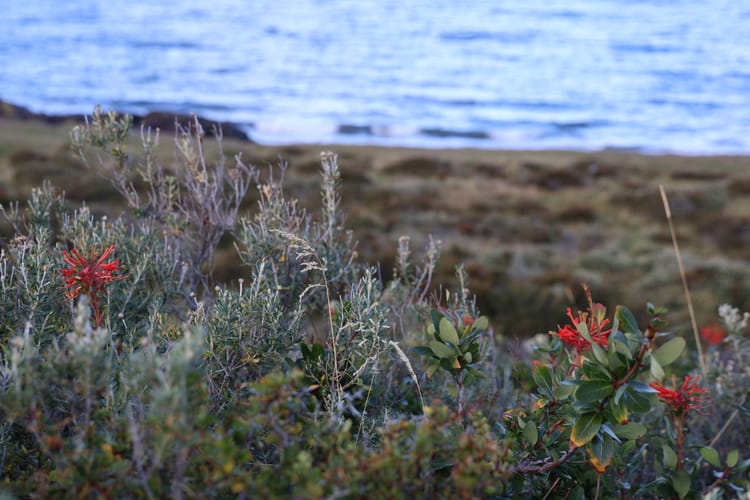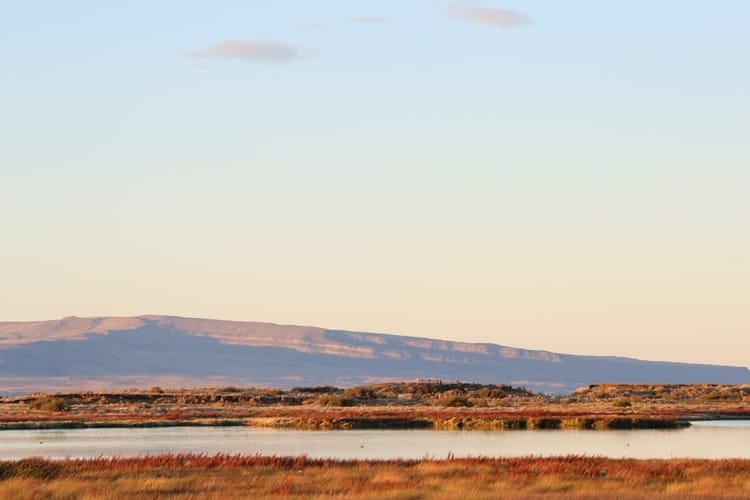From Avoidance to Choice
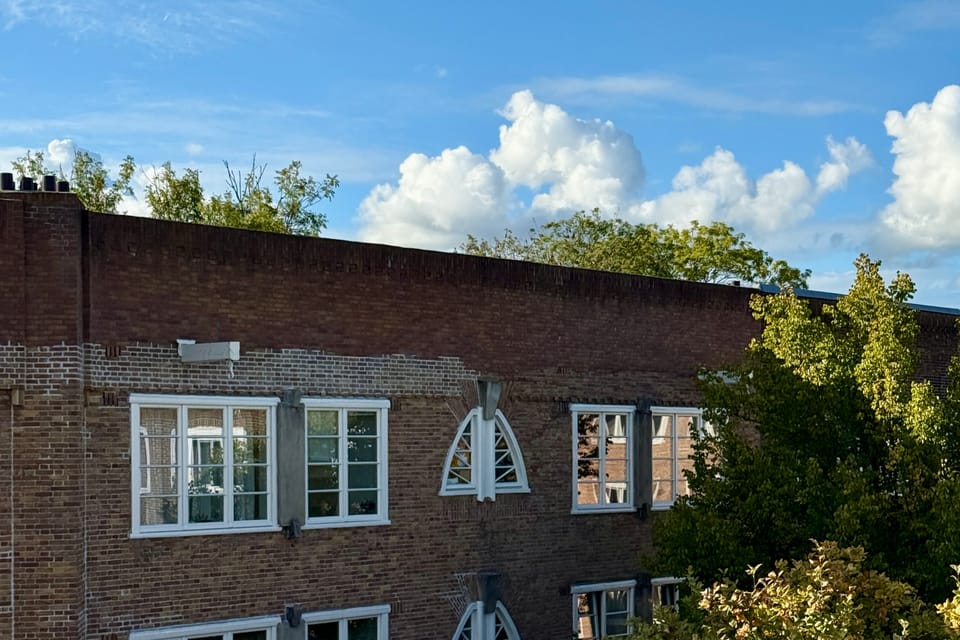
Last October in Berlin, I had a spark. A business idea that felt alive, promising, urgent even. I could see myself building it, shaping it, launching it.
Now, almost a year later, I’m sitting in Amsterdam. It’s September, October around the corner — and here’s the truth: I’ve made zero progress.
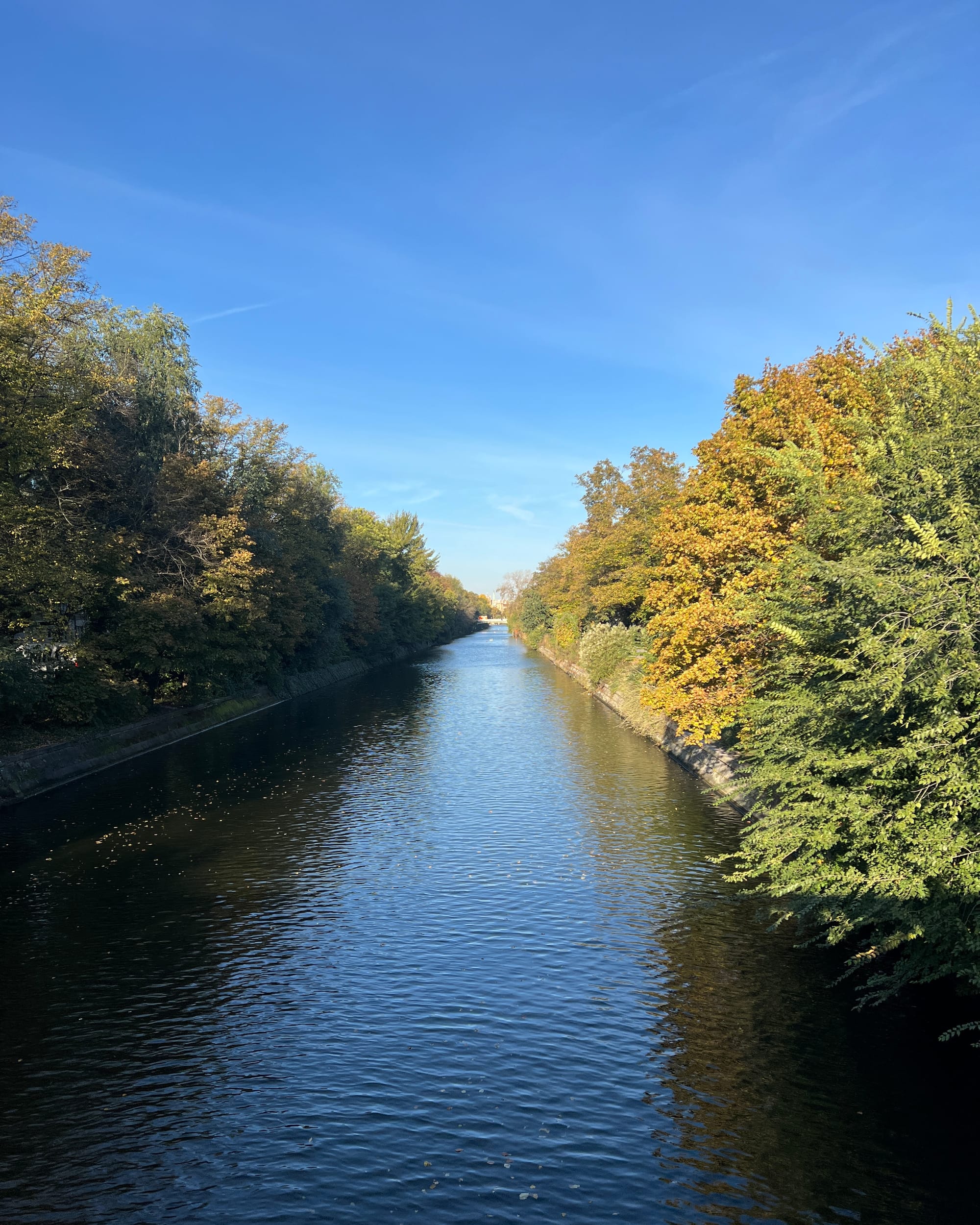
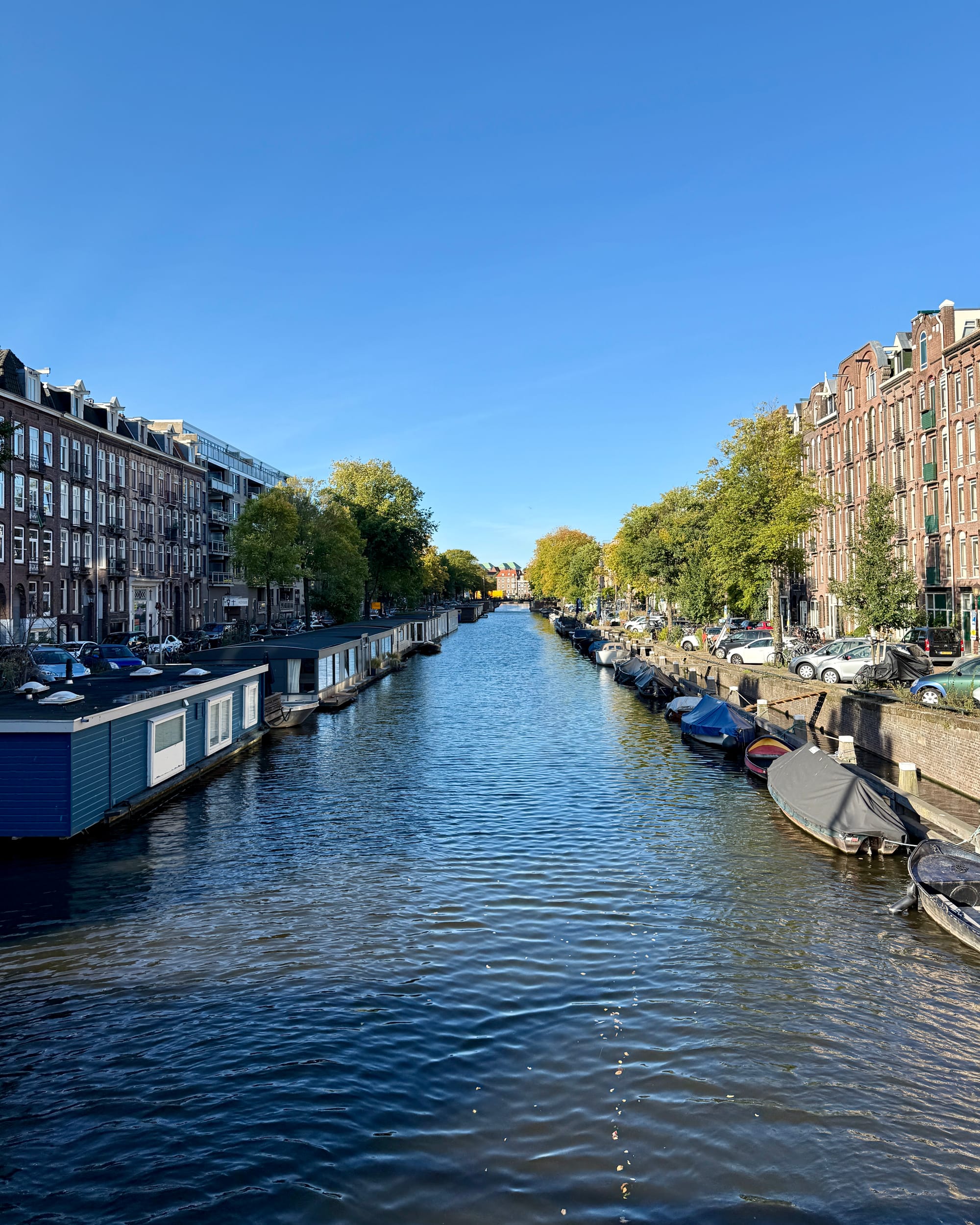
Berlin, October 15, 2024, 9:30AM (left) | Amsterdam, September 24, 2025, 9:55AM (right)
The Avoider Saboteur
In Positive Intelligence (PQ), Shirzad Chamine names one of our most universal saboteurs: the Avoider.
You can find the official Avoider guide here if you’d like to dive deeper: Positive Intelligence Avoider Guide.
The Avoider doesn’t shout. It whispers.
- “That business idea can wait. You’ll get to it when life calms down.”
- “It’s not worth the trouble.”
- “If I wait, it will get easier.”
- “This is uncomfortable — I’ll just deal with it later.”
On the surface, the Avoider promises peace. In reality, it costs us energy, opportunity, and integrity. It’s why the idea I conceived in Berlin is still untouched a year later.
Avoidance is not laziness. It’s an old survival strategy. For some of us, it once kept us safe — by staying quiet, by keeping the peace, by sidestepping discomfort. But as adults, it keeps us stuck.
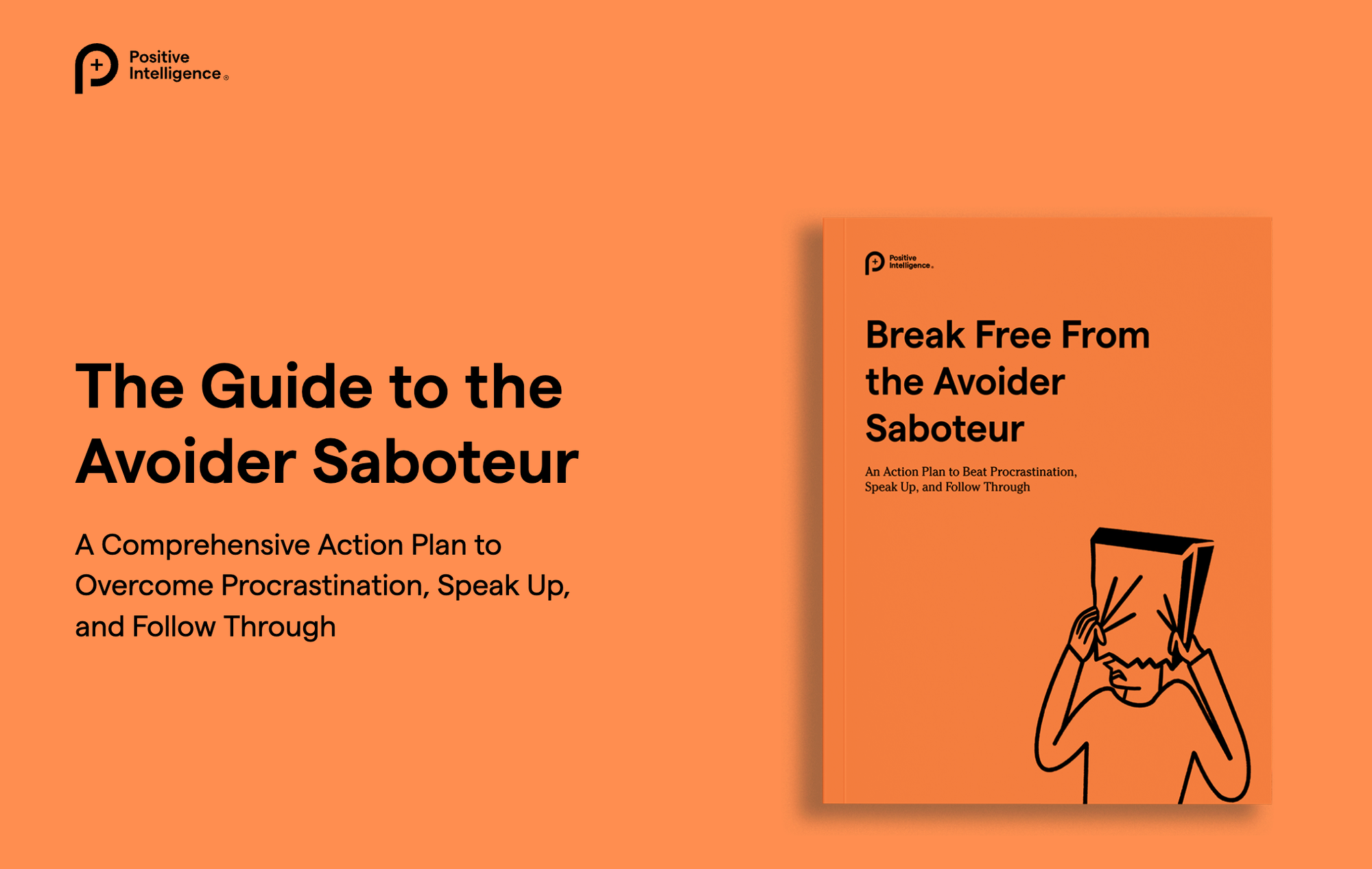
Signature Avoider Behaviors
The framework describes the Avoider this way:
- Procrastinating on tasks you secretly dread.
- Numbing out with “busy work” while the important work waits.
- Saying yes to others so you can avoid conflict — and quietly resenting it later.
- Pretending things don’t matter when in fact they do.
I told myself it wasn’t urgent. I distracted myself with easier projects. And because I work alone, there was no one to disappoint, no one to admit my stall to — which made it even easier to hide from myself.
The Hidden Costs
The Avoider’s logic is seductive: “If I avoid, I feel better now.” But the cost comes later, and it compounds:
- Small tasks avoided become mental weights you carry every day.
- Big dreams avoided erode self-trust.
- Relationships strained by avoidance lose depth and honesty.
My Berlin idea didn’t just stay undone — it drained energy every time I thought about it. Each month that passed, the guilt grew heavier, and the self-trust weaker.
What Fuels It
Underneath the Avoider is fear: fear of conflict, fear of failure, fear of discomfort. The Avoider whispers: “If you don’t look, you won’t feel pain.” But that’s a lie. As PQ puts it: “Avoidance buys short-term peace at the cost of long-term vitality and trust.”
For me, it wasn’t so much fear of failure. It was busyness. I got swept up in other ongoing projects, the ones already in motion, the ones that demanded my attention right now. The Avoider found cover in that urgency: “You’ll get to your Berlin idea once things calm down.” But things never really calmed down. By not acting, I didn’t just delay the idea — I delayed the possibility it carried.
The Co-Active Shift: Balance
The Co-Active Balance model offers a way through. Balance is about conscious choice — seeing our situation through multiple perspectives, choosing what truly matters, and moving into action with clarity.
Where the Avoider says “no choice,” Balance says “always choice.”
Step 1: Awareness — name the Avoider
Everything begins with awareness.
I had to admit to myself: a year has passed, and I’ve done nothing with this idea. That truth stung. But naming it broke the Avoider’s spell.
👉 Reflection: What’s something you’ve been avoiding? Write it down. Notice the voice of your Avoider. What’s it saying to you?
Step 2: Perspectives — expand the view
Avoidance thrives when we cling to one perspective: “This is too hard. This will go badly. I’m not ready.”
Balance invites us to expand. To try on new lenses.
For my Berlin idea, my default perspective was: “This is overwhelming.” But when I played with other perspectives, new energy opened:
- “This is an experiment, not a life sentence.”
- “This is a chance to practice courage.”
- “This is how I honor my creativity.”
👉 Practice: Write down your default perspective on something you’re avoiding. Then brainstorm at least three new perspectives. Which one feels lighter? Which one gives you more choice?
Step 3: Choice — own your yes and no
From perspectives comes choice. Every yes requires a no, and every no makes space for a yes.
Avoidance is still a choice — but it’s a default one. Balance invites us to make that choice conscious.
👉 Try this: For the thing you’re avoiding, write two lists.
- YES to: (progress, alignment, learning, relief)
- NO to: (silent stress, stuck energy, resentment)
Suddenly, the choice becomes visible. And visible choices invite action.
Step 4: Commitment — cross the threshold
Choice becomes real through commitment.
In Co-Active coaching, commitment is like crossing a threshold: moving from “good idea” into lived reality.
👉 Reflection: On a scale of 1–10, how committed are you to acting on your choice?
- If it’s under 8, ask: what would raise it? A smaller step? More support? Clearer perspective?
- Then, take one small action today. Send the message. Schedule the meeting. Sketch the first page.
Momentum begins with one step.
What Makes an Empowered Choice
In Co-Active coaching, Balance isn’t about finding a perfect equilibrium. It’s about empowered choice — choosing from awareness instead of default.
That’s where the Choice Triangle comes in:
- Conscious — first, notice what’s really true. What’s happening now? What are you avoiding?
- Intentional — then, choose with purpose. What really matters here?
- Proactive — finally, step forward. Even one small move shifts you out of avoidance and into momentum.
At the center is Empowered Choice. When your choices are conscious, intentional, and proactive, you stop letting the Avoider whisper in your ear — and you reclaim authorship of your life.
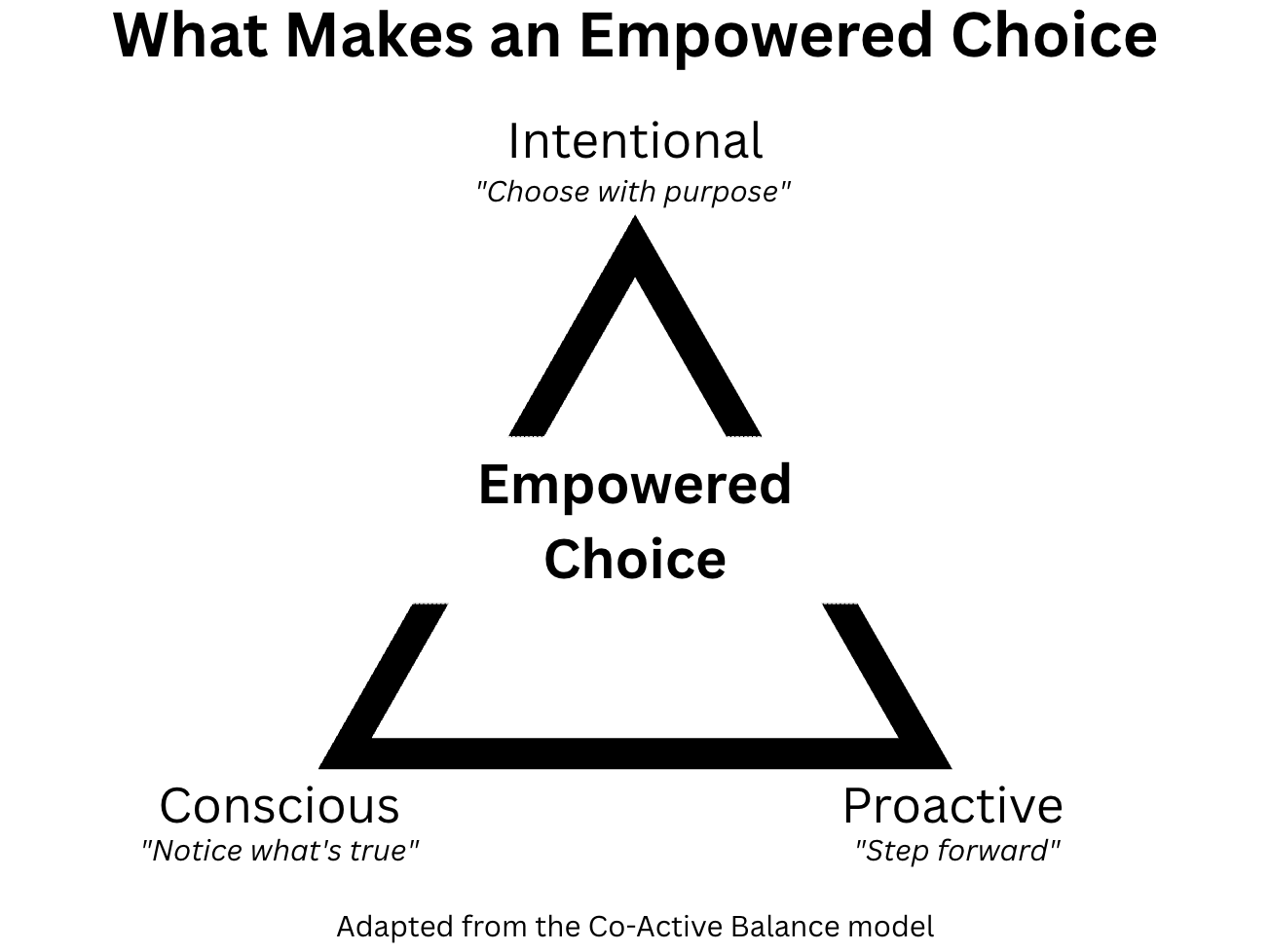
Why This Matters
Avoidance isn’t just about tasks undone. It’s about lives unlived.
Each time we avoid, we let fear choose for us. We live from default, not design.
But when we meet the Avoider with awareness, shift our perspective, make conscious choices, and commit — we reclaim our agency. We stop living from “someday” and start living from “today.”
A Coaching Invitation
So I’ll leave you with this:
👉 What’s one thing you’ve been avoiding that you are willing to choose today?
Not the whole mountain. Just the next step. Because it’s your choices — not your avoidance — that shape your life.
— Jay


